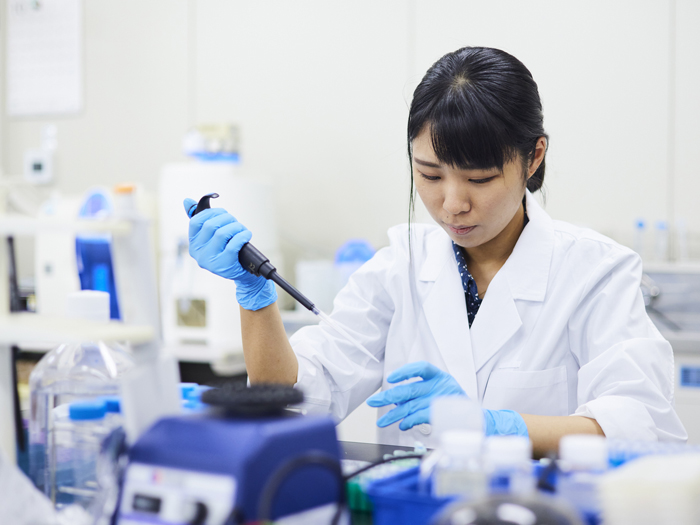Three Ways to Tackle Supply Chain and Quality Control Challenges in Life Sciences

In today’s global economy, supply chains that stretch around the world are the norm. Sourcing materials overseas yields cost efficiencies that often outweigh the risks involved. Those risks were highlighted by the COVID-19 pandemic, when restrictions on travel brought supply chains to a screeching halt. And the longer your chain is, the more severe the ripple effects of bottleneck after bottleneck will be.
“Pre-pandemic, there had been a move toward a global approach to the sourcing of materials. During the pandemic, that approach backfired. Domestic manufacturers weren’t able to get the raw materials they needed into the U.S. in order to make products,” said Kate Klaus, senior risk management attorney, FDA specialist, Medmarc.
Today, although the public health emergency is resolved, some negative effects of the pandemic-era supply chain challenges still remain.
In the biotech and pharmaceutical industries, the primary concerns surround quality control.
Threats to Consistent Quality
Despite the drawbacks, global supply chains are sticking around, and they will pose an ongoing challenge to pharma and biotech manufacturers. The raw materials needed to produce medications, biotechnology or medical devices are often fragile and must meet stringent specifications.
“Sourcing high-quality biological material like nucleic acid, viral vectors used in gene therapy, cell lines, antibodies and enzymes — and producing them with consistent quality — is difficult. With a global supply chain, it’s challenging to regularly audit suppliers. You must ensure that the quality is there. The materials must be transported in a way that keeps them safe and viable over a long journey,” said Zuhal Reed, Esq., risk management senior staff attorney, Medmarc.
On the medical device side, there is concern with electrical components that are incorporated into the devices.
“If you are having a component part manufactured to your specifications, you have to be cautious about who you’re choosing to work with to ensure that your product is going to be made according to those specs,” Klaus said.
Across the board, there are concerns with transparency and visibility into long supply chains.
The pandemic also saw new players enter the life sciences space in an effort to fill the gaps created by supply chain stalls.

Zuhal Reed, Esq., risk management senior staff attorney, Medmarc
“We saw a lot of ‘pop-ups’ emerge that weren’t previously involved in life sciences, but maybe they started operating in that space just to respond to the needs of the pandemic itself. If they choose to continue operating in the life sciences industry going forward, they’re going to be held to the same standards as every other participant in the industry. That can be a real challenge for them because of the quality requirements. So there’s a real concern there about the depth of their quality team and their quality operations,” Reed said.
Many of those players may have been given Emergency Use Authorization (EUA) during the pandemic. They have thus bypassed the full regulatory process to determine safety and effectiveness before a drug or therapy goes to market. As EUAs are now being rolled back, those entities will have to go through the traditional pathway or cease operating. In either case, this will impact product availability and could potentially unveil shortcomings in quality.
Product Liability Risk Mitigation
All of these issues increase product liability risk for life sciences manufacturers.
So how can biotech, medical device and pharma manufacturers ensure they are receiving consistently high-quality product amid the current supply chain challenges?
Klaus and Reed outlined three key strategies:
1) Shorten Supply Chains Where Possible
Though both agreed that global supply chains are here to stay, especially for larger manufacturers, some smaller companies could transition to more domestic sourcing.
“Shorter supply chains mean tighter control. You can personally audit a supplier if they are in the United States. There aren’t language barriers. You have more flexibility. There is more opportunity to build closer relationships with your suppliers, which makes it easier to anticipate backlogs and find solutions,” Klaus said. “All of these things make domestic supply chains really valuable.”
In some cases, companies will have no choice but to source overseas. For example, there may only be one manufacturer of a particular active pharmaceutical ingredient in the world. But, where possible, life sciences entities that keep suppliers close gain greater control over quality assurance.
2) Qualify and Audit Vendors Regularly
Due diligence in the vendor selection process is critical.
Companies should review a potential vendor’s regulatory history. Component part manufacturers will be registered with the FDA, and their history will be readily available. For raw materials suppliers, which aren’t required to register with the FDA, a strong vendor qualification program is key.

Kate Klaus, senior risk management attorney, FDA specialist, Medmarc
“Develop an outline of all of the criteria that are critical for your company and the product that you’re sourcing. Ensure that your partner meets all the necessary standards. You’ll want to see what their quality control methods are. You want to review their history for any quality issues, recalls or any issues their customers have had to make sure there is consistency in the creation of this biologic material. Inquire if the vendor has contingency plans if there’s a supply chain disruption so that it doesn’t end up impacting you down the line,” Klaus said.
Regular audits go hand in hand with the qualification process. Site visits and inspections help to ensure that specifications and standards are being met. “Go into your supplier’s facility, particularly if it’s a critical supplier, to make sure that they are complying with all regulations and with any applicable standards identified in your qualification process,” Reed said.
3) Craft Contracts That Transfer Risk
“A critical safeguard is a contract that shifts product liability risk to the supplier if an injury is caused by their work,” Reed said.
“When working with new insureds, we always ask whether the company is indemnified by their critical partners for any claims that might arise from their partners’ actions or negligence. We want to see those contracts. We want to know what the share of liability is there. It’s a critical facet in understanding the overall risk profile of a company,” she said.
A strong contract will also include language that guarantees regular site visits and a certain level of transparency into the manufacturing or quality control process. Essentially, anything that company will require to feel confident about the quality, effectiveness and safety of a product should be typified into a contract. That way, there is that promise to fall back on in the case of a claim.
Klaus, Reed and the Medmarc Risk Management Services team work closely with clients to help identify exposures, review contracts, provide guidance on regulatory standards and build risk mitigation strategies.
“It’s a great service that we offer with our policy,” Reed said. “They have access to our risk management team for all kinds of guidance on best practices.” &










